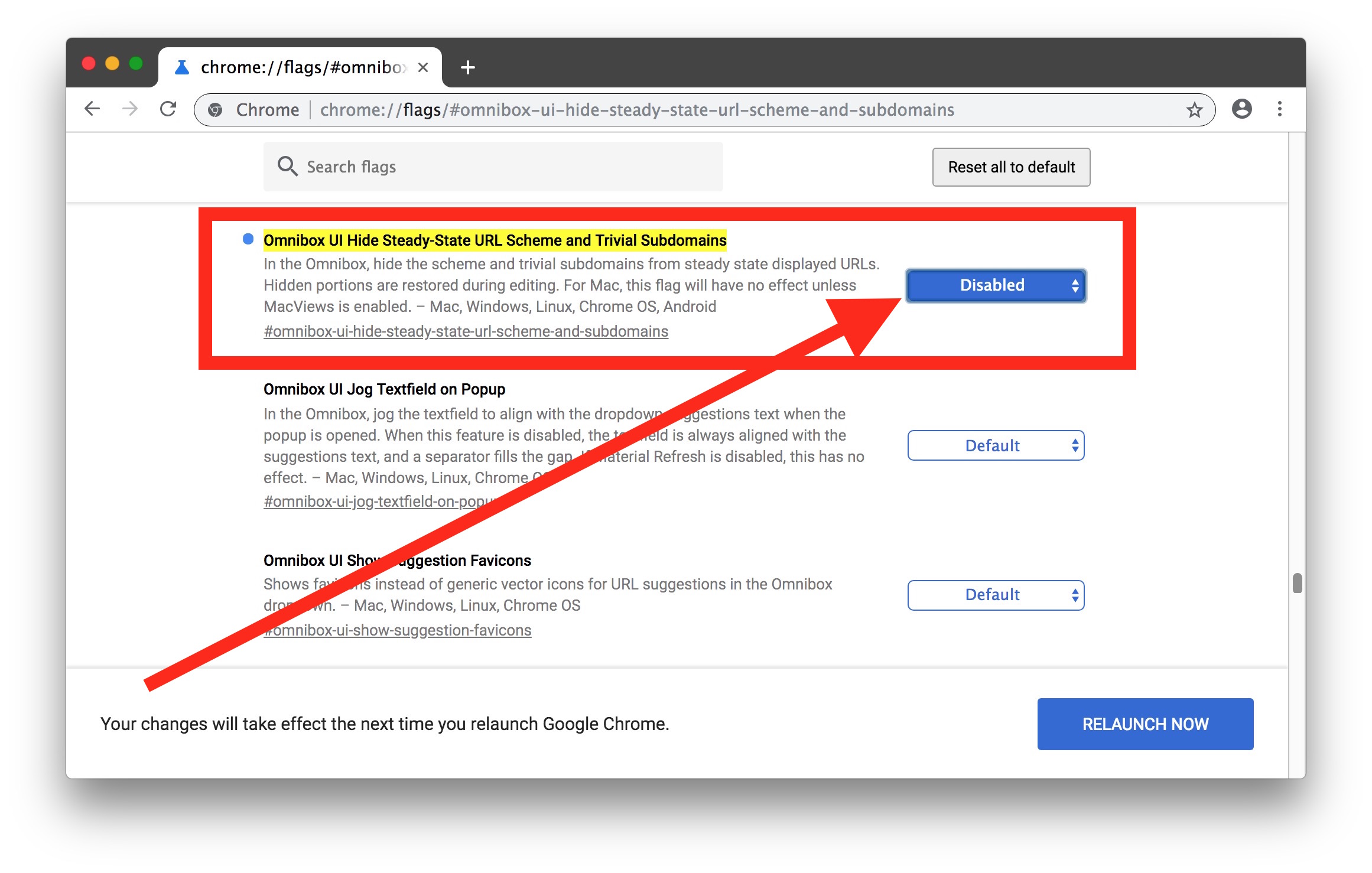How to Show Full URL & Subdomains in Google Chrome
![]()
The latest versions of Google Chrome web browser default to not showing the full URL of a website, stripping away any subdomains, including the “www” subdomain prefix, and URL schemes, which are labeled as ‘trivial’ by Chrome. This is controversial given that many websites use subdomains and “www” to host completely different websites, but nonetheless the setting is the new default in the Chrome browser.
If you’re a Google Chrome browser user and you want to always show the full URL including “www” or any subdomain, you can re-enable the display of full URL schemes in Chrome 69 or newer.
The setting adjustment applies to all new versions of Chrome, and while the screenshots demonstrated here are for Google Chrome on a Mac, the setting is the exact same on Google Chrome for Windows, Chrome for Linux, Chrome for Chrome OS, and Chrome for Android too. Thus, regardless of what operating system you’re using Chrome on, if you’d like to you can adjust the setting to show the complete URL and subdomains.
How to Make Chrome Show Subdomains & Full URL Again
- Open Chrome if you haven’t done so already
- In the URL bar of chrome, enter the following link to access the Chrome URL subdomain setting:
- For Chrome 71 and newer:
- For Chrome 69:
- Locate the setting named “Omnibox UI Hide Steady-State URL Scheme for Trivial Subdomains”
- Pull down the menu next to “Omnibox UI Hide Steady-State URL Scheme for Trivial Subdomains” and choose “Disabled” from the dropdown menu list
- Restart the Chrome browser (you can click ‘Relaunch Now’ once it appears, or manually quit and relaunch Chrome) for changes to take effect in Chrome
chrome://flags/#omnibox-ui-hide-steady-state-url-trivial-subdomains
chrome://flags/#omnibox-ui-hide-steady-state-url-scheme-and-subdomains

When you relaunch Chrome with “Omnibox UI Hide Steady-State URL Scheme for Trivial Subdomains” set to ‘Disabled’ you’ll see the full URL and any or all subdomains for any domain or link again.
This URL and subdomain setting applies to Chrome in MacOS, Windows, Linux, ChromeOS, and Android.
Why this change was made in Chrome isn’t entirely clear, but a somewhat similar URL obfuscating default setting exists in Safari on the Mac, which defaults to showing only the domain (including the subdomain however) while stripping away the rest of the URL. Many Safari users also want to see the full link however, in which case users can toggle a setting to show the full website URL in Safari for Mac as instructed here. It’s uncertain why many popular modern web browsers are going out of there way to hide portions of website URLs is not entirely clear, but many web users do like to see the complete URL of a website, and web developers in particular are generally highly attuned to full website URLs.
Another notable change in the latest versions of Chrome browser is the redesigned interface, and while that’s much more of a visual preference some users may like to remove and disable the new Chrome theme UI and return to the classic appearance of the browser.
If you have any tips, thoughts, or suggestions about Chrome showing or hiding subdomains of a URL, URL schemes, or otherwise, share with us in the comments below!


Opera has the same behavior any idea how to do it on opera?
https://bugs.chromium.org/p/chromium/issues/detail?id=1045522
Please upvote this if you are frusterated as I was, as I have created a bug report for it.
Looks like the “omnibox-ui-hide-steady-state-url-trivial-subdomains” flag has gone in Chrome 79 (macOS).
My browser version is 7.8 but these settings is not showing my Chrome flags page. What can I do? Please help me. Our urls showing without www, https and subdomains.
Thank you! Hiding this information was not a helpful feature for web developers. I’m glad it can be turned off.
Hello, this fix works for ‘public’ sites, but not internal. We have a mix of internal http and https SharePoint sites that are still getting the URL stripped. Any idea on how to force those to display the full URL?
Unfortunately you lose the Share button when enabling the full url. Bummer. Anyway to have both?
The method given in the article apparently works for every version of Chrome . . . _except_ Chrome for iOS, which if you pay attention is not mentioned among the OSs that the method works for.
But! the flag given by Frenx, upthread, actually does work for iOS! All hail Frenx!
(Thank you so much, Frenx! This problem has been driving me dingier, and I’m so thankful for your help!)
It does not work at all
Version 69.0.3497.100 (Official Build) (64-bit)
It works fine, you are doing it wrong kostets. This is for Chrome, the web browser.
Try this too:
– chrome://flags/#omnibox-ui-hide-steady-state-url-scheme-and-subdomains set to disabled
– chrome://flags/#views-browser-windows set to enabled
– chrome://flags/#upcoming-ui-features set to Default or disabled.
It does not work!
Chrome 69.0.3497.92
It does work in Chrome, follow the instructions as described. I just did this myself in Chrome.
On chrome for iOs, the flag is
UI Refresh Location Bar:
chrome://flags/#UI-Refresh-Location-Bar
Thanks for the tip.
Just logged on and noticed Chrome looked completely different.
This drives me nuts I can’t believe they would hide subdomains and URL schemes.
Does the Chrome engineer who made this change realize that Google uses subdomains too? maps.google.com…. amongst dozens of others…. not to mention banks, geo targeting, hundreds of thousands of sites… developer sites…. etc… madness!
I hope they revert this. There’s a thread on people reporting it as a bug but who knows if anyone will make the change back or not….
https://bugs.chromium.org/p/chromium/issues/detail?id=881694